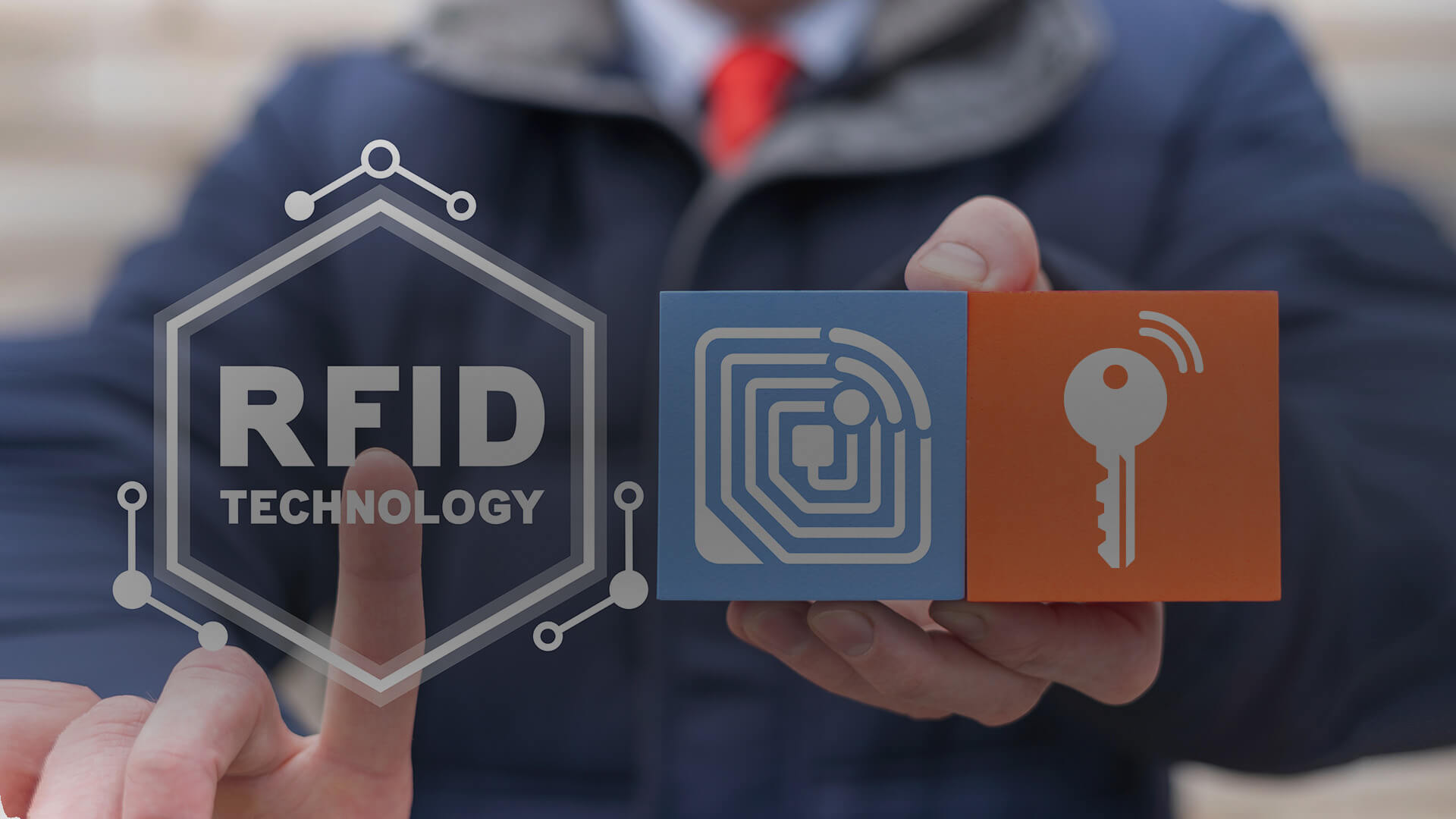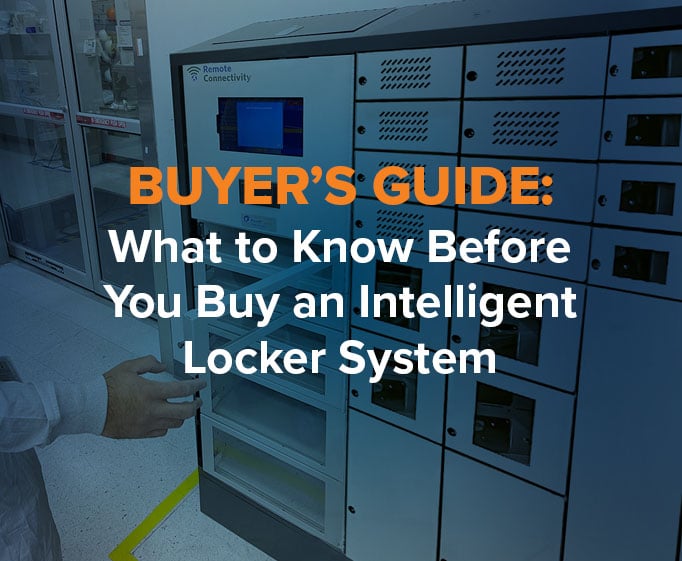By Jay Palter | March 21, 2024
RFID Definition
So how does RFID work? Radiofrequency identification (RFID) is one of the older wireless machine communication standards still used today. Why hasn’t it been replaced by something newer, higher-tech? There is a very good reason: RFID is still the most efficient and cost-effective technology for short-range wireless tracking.
This article explores how RFID works, why it’s the best solution for many different business needs, and how it is used day-to-day in different industries.

Essential Parts of an RFID Tracking System
RFID tracking systems are robust and adaptable technologies, capable of being tailored to a wide range of industry use cases, storage requirements, and operating environments. All of that adaptability is built on only a few core components. If you understand how they work and interconnect, you can select the product that fits your organization’s needs the closest.
The key components of modern RFID tracking systems include RFID tags, storage cabinets, readers and access terminals, and management software.
RFID Tags—Active vs Passive RFID
RFID tags are essential components in modern tracking and asset management systems. These tags are available in three main types: passive tags that operate without power, active tags powered by batteries, and semi-passive tags that combine features of both. There are several types of RFID tags.
Passive RFID
These tags don't have their power source. They function by bouncing back a signal from a nearby scanner with identification data. Because they’re unpowered, passive RFID tags can be manufactured quite small, often to the size of a small coin or pen cap.
Active RFID
Unlike passive tags, active RFID tags have a battery to power a stronger signal. This gives them a much larger range for tracking purposes, making them suitable for monitoring high-value items over greater distances. They are larger compared to passive tags due to their onboard battery.
Semi-passive RFID
Semi-passive RFID tags have an integrated circuit, an antenna, and a battery, much like an active tag. But they lack a transmitter to “push” their signal at greater range. Semi-passive RFID technology is ideally suited for scenarios where advanced capabilities such as environmental monitoring are beneficial, provided the tags remain within the reader's vicinity or can be scanned consistently.
Storage cabinets
RFID tags are widely used to track business assets like key rings, mobile electronic devices, and security equipment, all requiring secure storage when not in use. Modern RFID systems incorporate storage cabinets to secure these assets and provide charging and fault monitoring capabilities. These cabinets are modular, so you can customize them to fit different storage needs and facilities.
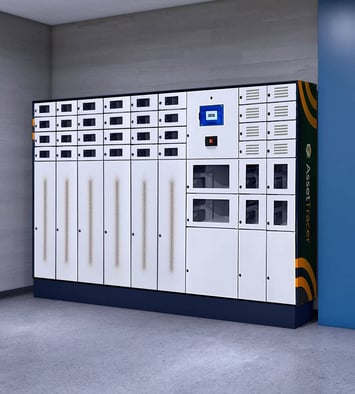
Readers
RFID readers convert signals from tracking tags into actionable data for computer systems. For most asset tracking, readers are mounted on storage cabinets to manage asset transactions. Real-Time Location Services (RTLS) tracking systems use readers distributed throughout a facility to pinpoint asset locations in real-time, as their name suggests. These must rely on active RFID tags for extended range.
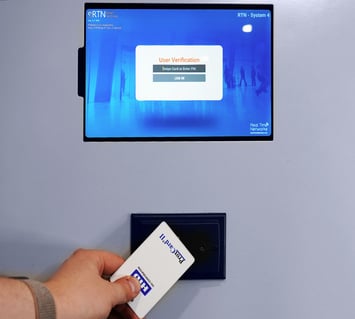
Access terminals
Smart access terminals are the main interface between staff and an RFID system. They allow users to authenticate themselves when checking out or returning assets. These terminals support various access control methods, including RFID tokens, PIN codes for less secure areas, or biometric verification such as fingerprint, iris, or facial recognition.
Some terminals use touchscreens to facilitate workflow tracking. For instance, during asset transactions, administrators can make the touchscreen prompt users with checklists they need to complete about their transaction request and job for added accountability. You can require them to log fault codes or maintenance issues on asset return.
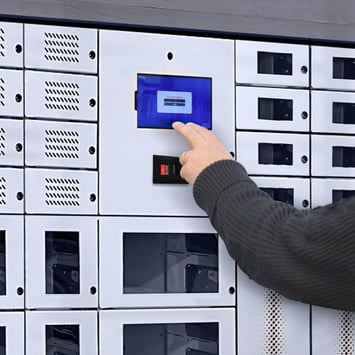
Management software
Sensor, cabinet, and access terminal data feed into an RFID system’s software dashboard, granting system administrators real-time insights into the whereabouts of RFID-tagged equipment, keys, and vehicles. This allows managers to receive instant notifications for overdue asset returns or sensitive assets moving through exits monitored by the RTLS system. Additionally, the dashboard offers reporting tools that provide detailed tracking histories, aiding managers in uncovering meaningful trends that may otherwise go unnoticed.
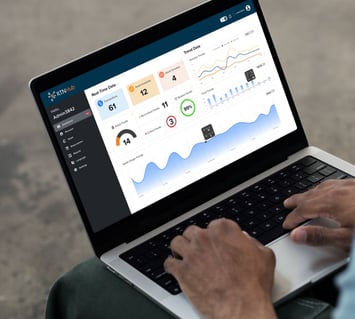
Business Benefits of RFID Tracking
RFID tracking systems significantly boost operating efficiency through automation and tighter process control. In most organizations, this leads quickly to reduced labor costs. Then, down the road, as additional collected data reveals better details about asset utilization, most organizations can “right-size” their equipment inventories.
By automatically logging details on asset use, operations become smoother, and recovering missing assets becomes easier. It also simplifies the management of equipment, fleet, and personnel by automatically generating transaction logs and reports.
RFID also enhances process controls by providing detailed data that supports the consistent and reliable execution of workflows, aiding in adopting business methodologies like Lean or Six Sigma. Compliance with standards is easier with the system’s dashboard, which offers customizable reporting for various regulatory needs.
RFID Applications & Use Cases Across Industries
As we’ve seen, RFID tracking systems are versatile platforms that improve many business activities and even support brand-new ones. Their versatility is their primary strength. As a result, RFID tracking systems have use cases in many industries.
Manufacturing & Distribution
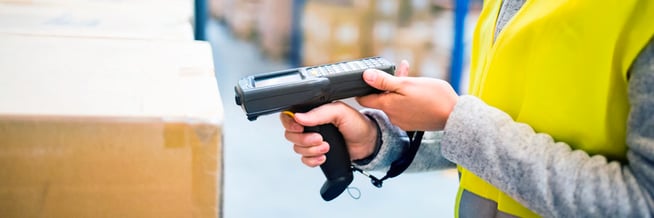
RFID tracking systems streamline the monitoring of essential handheld devices required for daily operations in manufacturing and distribution workplaces. For instance, manually tracking the signouts and return of handheld scanners could occupy a full-time employee. The task is automated by implementing an RFID asset tracking system, freeing management to focus on other critical responsibilities.
Discover: Asset and Key Management Solutions for Warehouse and Distribution Management
Law enforcement & Emergency services

Law enforcement and emergency medical service (EMS) teams are equipped with significant gear, including items like police radios that often feature embedded RFID chips. Utilizing an RFID tracking system to automate gear sign-outs ensures that personnel have all the necessary equipment before starting their shift. If an item like a radio is missing, the storage system detects the RFID tag of the equipment left behind and notifies the user.
Law enforcement agencies also widely adopt RFID tracking systems for managing evidence, ensuring a secure chain of custody. This technology is crucial for maintaining integrity from collection to trial presentation, aiding in accurate and reliable evidence handling.
Discover: Key & Asset Management Solutions for Law Enforcement
Healthcare

Hospitals, clinics, and other healthcare providers must guarantee the availability of medical equipment precisely when and where it's needed, both for better patient care and because such equipment is costly. With increasingly constrained healthcare budgets, these organizations cannot afford unnecessary equipment losses.
Implementing RFID tracking for medical equipment enhances patient care by enabling nursing staff to locate necessary equipment swiftly. It provides nursing supervisors with clear visibility on which staff member has checked out specific equipment, their destination, and the expected return time. A glance at their RFID tracking dashboard allows them to locate equipment easily.
Learn More: Healthcare Equipment Management: Improving Operations with RFID Technology
Education

RFID tracking systems enable secure, automated check-outs of educational devices such as tablets and laptops, enhancing equipment management and campus security. This system provides accountability over which student or instructor has borrowed each device.
Additionally, the system streamlines technical support. Should a device have a technical issue, the teacher or student can report the problem via the access terminal upon return. The tracking system then temporarily removes the device from availability and alerts the IT department, allowing a technician to collect and service it promptly.
Discover: Key & Asset Management Solutions for K-12 Schools, Colleges, and Universities
Hospitality

Providing top-tier guest service requires instant access to keys and equipment. Numerous hotels and venues now equip their service staff with tablets to enhance operational reliability and boost housekeeping productivity. For instance, housekeepers can use a tablet application to inform the front desk when a room is prepared for an incoming guest. RFID tracking systems oversee the check-out of keys and equipment, ensuring that items are always accounted for and that essential electronics are stored securely with charging capabilities included.
Learn More: How to Optimize Hotel Operations Using RFID Tracking for Hotels and Resorts
Work with a Trusted Provider
Real Time Networks offers the AssetTracer RFID asset tracking and management system. It is designed to make asset tracking simple and effective for organizations of all sizes. AssetTracer is powerful and flexible, suitable for various business use cases across many industries. It utilizes RFID tracking tags and can use RFID fobs for access control, among other methods.
Real Time Networks also offers KeyTracer physical key management systems. KeyTracer key cabinets are powered by RFID technology. They identify individual keys and keyrings and help you ensure that only authorized users ever have access to keys. And since all transactions are carried out according to RFID-tracked key identities, you’ll always have an error-free digital “paper trail” logging who has which keys in their possession.
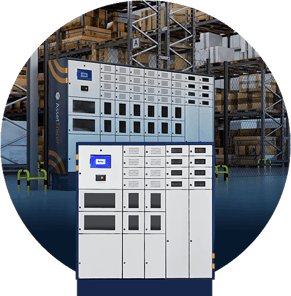
See a live demo of how RFID technology can help your organization operate more efficiently.
Subscribe to our blog

Jay Palter
Vice President of Marketing & Partnerships

